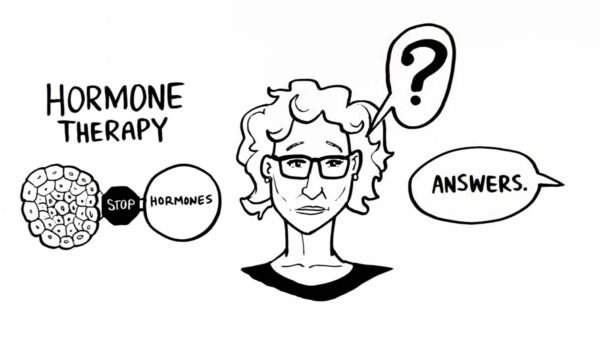How to know if a baby is a dwarfism?
For konowing baby has dwarfism involves recognizing specific signs and undergoing diagnostic evaluations. You can find most common signs dwarfism in newbors and infants:
1. Physical Characteristics
Some physical features may be a sign of dwarfism in a newborn or infant. You can find most common sign of dwarfism in a newborn in below:
- Short stature: Height significantly below average for their age.
- Disproportionate body parts: For example normal-sized torso with shorter arms and legs (common in achondroplasia) or a proportionally small body (common in primordial dwarfism).
- Facial features: Flattened nasal bridge, prominent forehead or other distinctive facial traits.
- Limited joint mobility: Reduced range of motion in elbows or hips.
- Curved spine: Signs of scoliosis or kyphosis.
2. Family and Medical History
- Genetic factors: If one or both parents have dwarfism, baby has a higher chance of inheriting the condition.
- Pregnancy and birth history: Growth abnormalities detected during ultrasound or issues during delivery might provide clues.
3. Medical Tests and Diagnosis
- Growth charts: Regular monitoring of the baby’s growth compared to standard growth charts can highlight potential concerns.
- X-rays: For examine bone structure and identify any abnormalities.
- Genetic testing: Can confirm specific types of dwarfism, such as achondroplasia or other genetic mutations.
- Blood tests: May be used to rule out hormonal or metabolic causes of growth issues.
4. Additional Diagnostic Tools
- Imaging studies: MRI or CT scans can evaluate skeletal development and detect abnormalities.
- Hormone levels: Testing for growth hormone deficiencies or thyroid issues that could affect growth.
Statistics And Numbers About Dwarfism in Newborns And Infants
1. Prevalence
- Overall occurrence: Dwarfism affects approximately 1 in 10,000 to 30,000 live births worldwide.
- Achondroplasia: Most common type of dwarfism occurs in about 1 in 15,000 to 25,000 births.
- Primordial dwarfism: A rarer form, occurs in less than 1 in 1 million births.
2. Genetics and Inheritance
- New genetic mutations: About 80% of cases of achondroplasia are due to spontaneous genetic mutations, with no family history of the condition.
- Inheritance: If one parent has achondroplasia, there is a 50% chance the child will inherit the condition. If both parents have achondroplasia;
- 25% chance the baby will not inherit the condition.
- 50% chance the baby will inherit one gene for the condition (and live with dwarfism).
- 25% chance the baby will inherit two copies, cause to a severe condition often incompatible with life (homozygous achondroplasia).
3. Types of Dwarfism
- There are over 400 types of dwarfism type with achondroplasia being the most common.
4. Growth Measurements
- Average height:
- Adults with achondroplasia have an average height of about 4 feet (120 cm).
- Newborns with achondroplasia may have a birth length slightly below average, though it becomes more pronounced as they grow.
- Growth rates: Babies with dwarfism grow at a slower rate than peers, often falling below the standard growth chart percentiles.
5. Global Rates
- Dwarfism occurs in all ethnicities and populations at roughly the same rate.
6. Prognosis and Survival
- Life expectancy: Most newborn and infant with dwarfism have a normal life expectancy, though conditions like homozygous achondroplasia can cause to early mortality.
- Infant mortality: In some severe types of dwarfism, like thanatophoric dysplasia, survival beyond infancy is rare.



10 Advices For Parents Who Have A Newborn With Dwarfism
1. Educate Yourself About Dwarfism
- Learn about your baby’s specific type of dwarfism, beacuse there are over 400 different types, each with unique challenges and needs.
- Understand the medical, developmental and social aspects to provide the best care and support.
2. Get Medical Help
- Work closely with a pediatrician and specialists (e.g., geneticists, orthopedists, endocrinologists) to fallow your baby’s growth and development.
- Join regular check-ups to identify any potential complications early such as spinal or respiratory issues.
3. Early Intervention
- Join in early intervention programs, like as physical, occupational or speech therapy, for support your baby’s developmental milestones.
- Be careful about any mobility or sensory challenges proactively.
4. Foster a Positive Environment
- Celebrate your baby’s milestones and achievements, no matter how small.
- Provide emotional support and encourage independence as they grow.
5. Adapt Your Home and Lifestyle
- Use adaptive equipment like specially designed car seats, high chairs and cribs to be sure safety and comfort.
- Make modifications to accommodate your baby’s needs as they grow, such as step stools or low shelves.
6. Connect with Support Networks
- Join local or online support groups for parents of children with dwarfism to share experiences, advice and encouragement.
- Organizations like Little People of America (LPA) or similar groups in your region can be valuable resources.
7. Advocate for Your Child
- Teach your child to embrace their unique identity and build confidence.
- Be prepared to address and educate others about dwarfism to foster understanding and inclusivity.
8. Focus on Health and Nutrition
- Be sure your baby maintains a healthy diet to prevent issues like obesity, which can exacerbate joint or mobility problems.
- Fallow for any feeding difficulties and consult specialists if needed.
9. Prepare for Potential Challenges
- Be careful about medical complications such as breathing difficulties, spinal issues or hearing loss, which may sometimes accompany dwarfism.
- Develop a plan with your doctors for manage these challenges.
10. Embrace Your Journey
- Remember that your child is unique and your love and support will help them thrive.
- Focus on your baby’s strengths and abilities rather than limitations.


Life Expectancy And Survival Rate Of Dwarfism
1. Achondroplasia
- Life Expectancy:
- Average: 70 to 80 years
- Most People with achondroplasia have a normal lifespan however complications like spinal stenosis, obesity or respiratory issues can sometimes affect quality of life.
- Medical Risk:
- Around 15-20% of people may face complications related to respiratory issues, especially in infancy or require surgeries for spinal problems.
2. Thanatophoric Dysplasia
- Life Expectancy:
- Newborns: Most die within hours to days after birth.
- Survival rate: Less than 5% of people with this condition survive beyond the neonatal period.
- Cause: Severe underdevelopment of the bones, especially in the chest, lead to respiratory failure.
3. Primordial Dwarfism
- Life Expectancy:
- People can live into their 20s, 30s, or 40s but approximately 10-30% of people may die in childhood or adolescence due to heart or organ complications.
- Survival Rates:
- This condition is rare and survival rates depend on the specific subtype. For example, those with Seckel syndrome (a form of primordial dwarfism) may have a life expectancy of 30-40 years with medical support.
- Health Complications: Increased risk of heart failure, kidney problems or neurological issues.
4. Diastrophic Dysplasia
- Life Expectancy:
- 50% of people survive into adulthood, often living into their 30s or 40s but many face significant health challenges.
- Risks:
- Joint deformities and respiratory issues can contribute to decreased life expectancy if not managed. Some people develop severe spinal curvatures or respiratory issues that can affect lifespan.
5. Spondyloepiphyseal Dysplasia (SED)
- Life Expectancy:
- Normal life expectancy is possible however people with SED may face health complications like early-onset osteoarthritis, scoliosis or vision problems.
- People with severe forms may have a shortened life expectancy but many live well into their 60s or 70s with medical management.
- Survival Rate: Most people can live a normal life if treated for joint and skeletal issues.
6. Pseudoachondroplasia
- Life Expectancy:
- People with pseudoachondroplasia have a normal life expectancy, which is usually the same as the general population.
- Bur they may experience joint pain, arthritis and hip or knee problems as they age, which can require treatment but does not significantly affect lifespan.
7. Morquio Syndrome (Mucopolysaccharidosis Type IV)
- Life Expectancy:
- Children with Morquio syndrome have a life expectancy of 20-30 years, although some may live into their 40s with treatment.
- Most complications are due to heart disease, respiratory issues and skeletal deformities.
8. Cranioectodermal Dysplasia (CED)
- Life Expectancy:
- Average life expectancy is approximately 20-30 years, although some people may live longer with appropriate management.
- Complications such as heart issues, kidney disease or neurological problems canlead to shorten life expectancy.
9. Brachydactyly
- Life Expectancy:
- Normal life expectancy is typically observed as this condition primarily affects the length of the fingers and toes.
- Health risks are low and people can live a full, healthy life unless associated with other syndromes or conditions.
Additional Statistics
- Health Monitoring: Life expectancy and outcomes can be improved with early diagnosis, intervention and regular medical care to manage complications.
- Overall Statistics: Studies show that people with common forms of dwarfism like achondroplasia typically have a 98% survival rate into adulthood when complications are properly managed.
We wish healthy life to you.
You can find details lates treatment option of dwarfism in newborns and baby in below: Vosoritide.
Also you can find details about most common dwarfism type Achomdroplasia in below:

